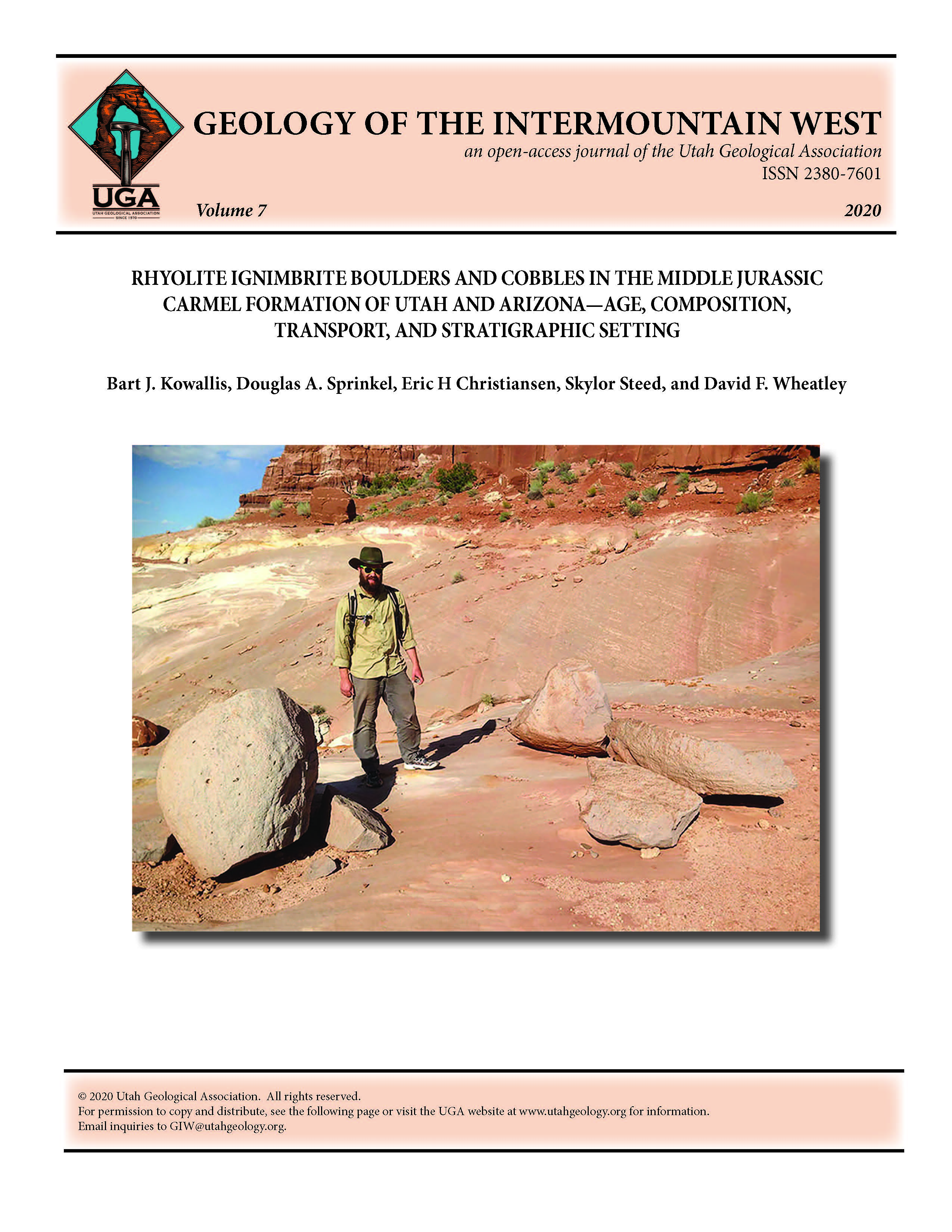Rhyolite ignimbrite boulders and cobbles in the Middle Jurassic Carmel Formation of Utah and Arizona—age, composition, transport, and stratigraphic setting
Abstract
A stratigraphic layer containing rhyolite cobbles and boulders in the Middle Jurassic Carmel Formation of southern Utah represents a singular, unusual event in the otherwise low-energy sedimentation of this formation. A laser-fusion, single-crystal 40Ar/39Ar age of 171.73 ± 0.19 Ma obtained from sanidine in one of the clasts is about 8 m.y. older than a zircon U-Pb age obtained on a fallout tuff from the sediments surrounding the clasts (163.9 ± ~3.3 Ma). The volcanic clasts are poorly-welded rhyolite ignimbrites that may have been deposited as much as 200 km from the eruptive center, perhaps along pre-existing valleys. The tuff deposits then remained in place for several million years during which time they were subjected to weathering, alteration, and perhaps topographic inversion, creating mesas capped with tuff underlain by soft Middle Jurassic silt and mud. Triggered by unusual rainfall or earthquakes, debris flows carried the clasts a few 10s of kilometers from their outcrops to the depositional site. Earlier work proposed that the Middle Jurassic arc was a low-standing, arc-graben. If this was the case, then the tectonic setting was likely similar to the modern Central American arc in the vicinity of Nicaragua where tuffs erupted from a low-standing arc deposited onto an adjacent highland and were then eroded by streams flowing to the east onto a fluvial plain that is near the sea.

Copyright (c) 2020 Geology of the Intermountain West

This work is licensed under a Creative Commons Attribution 4.0 International License.




